Throughout the Charleston area, the Holy City is surrounded by National Monuments and Historical sites, but did you know that South Carolina is also home to one of our 63 National Parks? Just a stone’s throw away from the heart of downtown lives Congaree, a vast 26,000-acre property filled with rich history and biodiversity.
The History of Congaree
This unique floodplain forest ecosystem hosts a diverse population of plants and wildlife while touting the largest tract of old-growth bottomland hardwood forests left in the United States. Not to mention some of the tallest Loblolly pines in the world. This expansive landscape of nature houses a unique cultural history that gives visitors an experience of a simpler life without the invasive footprint of modern-day civilization.
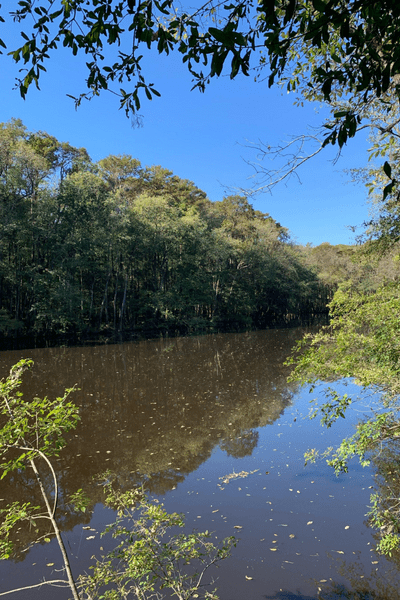
Named for its location next to the Congaree river, this area has been inhabited by humans for over 10,000 years. It has served many roles throughout history offering a home for the nomad people of the Congaree tribes to later being developed as settlements for colonists and Europeans. The land was cultured for cash crops and attempts to control the floodplain were often met with defeat. The vast landscape also served as a refuge for escaped slaves seeking a better life within the wilderness. The land survived many waves of logging and deforestation that threatened its existence until it was designated as a National Swamp Monument in 1976.
Becoming a National Park
Remaining under National protection, Congaree was eventually named a National Park in 2003. Despite not being ranked as one of the more popular parks, it encompasses more of the Lowcountry lifestyle and charm that the south is known for – allowing visitors to take the park at a slower pace with fewer crowds. Depending on your level of adventure this park has a little something for everyone making it an excellent day trip, pit stop, or long weekend excursion.
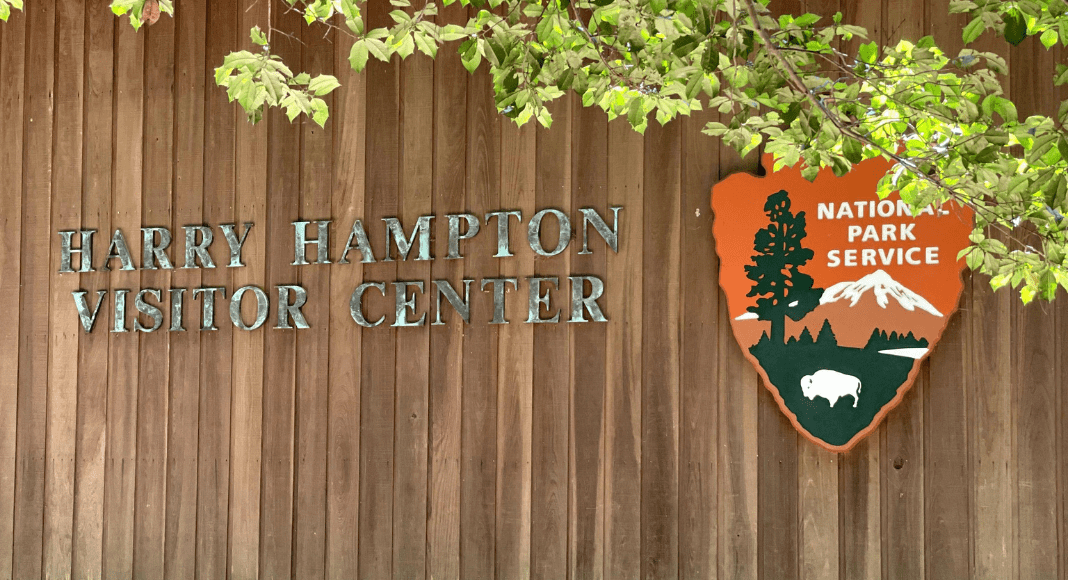
What to Expect at Congaree
This park offers tons of activities including hiking and canoe/kayak trails, fishing, primitive tent camping, and avid bird watching and wildlife encounters. The park itself is open 24 hours a day, 365 days a year, and requires no entrance fee. The park includes a dedicated parking lot beside the visitor center. The staffed visitor center operates daily from 9 am-5 pm and includes a gift shop, restrooms, and history about the park. Bikes are not permitted on the trails within the park, and leashed dogs are welcomed on the trails.
The highlight of this park is the Boardwalk trail which loops a great portion of the park with a round trip distance of 2.6 miles. This trail is both stroller and wheelchair accessible, making it family-friendly for all ages. Ten additional trails make up the remaining offerings ranging from easy, moderate, and difficult with varying distances up to 12 miles.
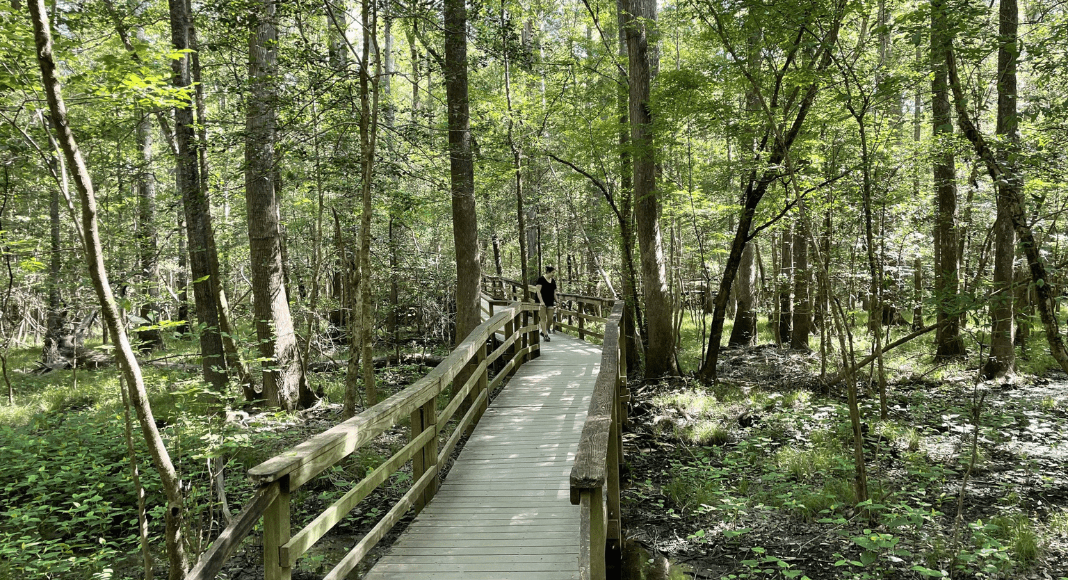
The visitor center boasts a mosquito meter that jokingly rates the number of bugs you may run into from “all clear” to “war zone”, so make sure to pack the bug spray, sunscreen, snacks, water, and proper footwear. This park is known for its wildlife, so keep that in mind depending on your comfort zone of critters, as close encounters with snakes and animals on and around the trails are not uncommon. The best months are typically early spring or in the fall when both the bugs and flooding chances greatly subside. Most trails are shaded with tree cover and provide benches and resting points if needed. Cell reception can be sparse – so make sure to download any GPS maps ahead of time and know there might not be a signal within the park.
Being a National Park, the younger visitors have the option to take part in the Junior Ranger program as well as a variety of programs throughout the year including, guided tours, educational programs, and workshops. This park also hosts the opportunity to watch the coveted synchronous firefly display in mid-May/June through a lottery system for tickets.
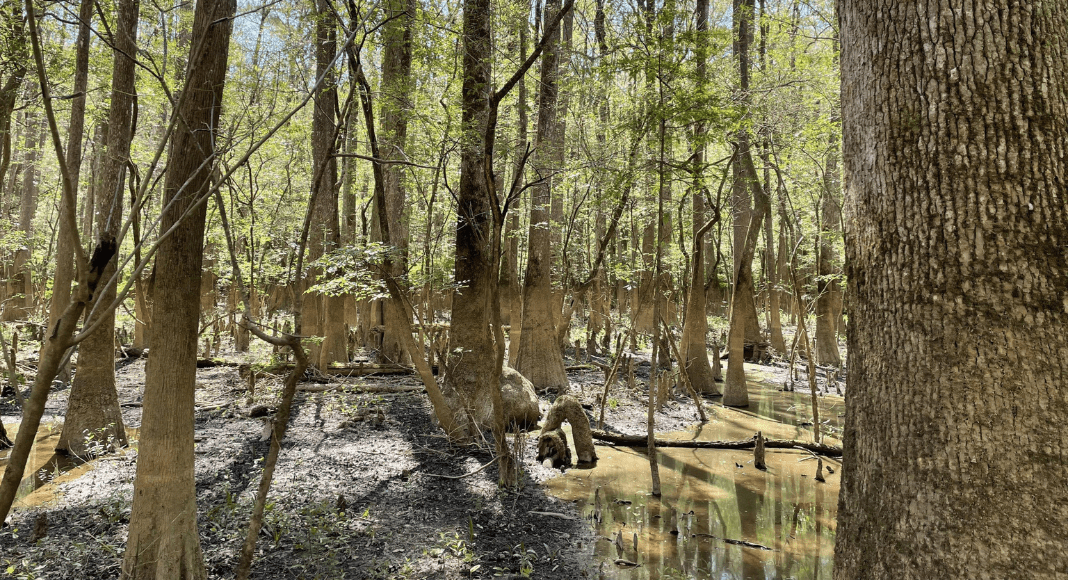
As South Carolinians, we owe it to our beautiful landscape and history to explore and enjoy what resides right in our own backyard. Congaree National Park is truly a hidden gem for both locals and tourists alike and offers a great opportunity to Explore SC.
“In a world that is becoming increasingly virtual, the parks remain places of visceral beauty. Places where we can remember that we are but a small part of the life on this planet and that it is a truly wonderful planet and the only one we’ve got.”
― Nevada Barr




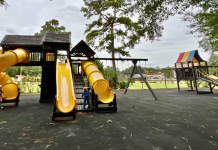






Amber
Excited to see your name on this article.Full of so much great info.
Nice job.
Comments are closed.